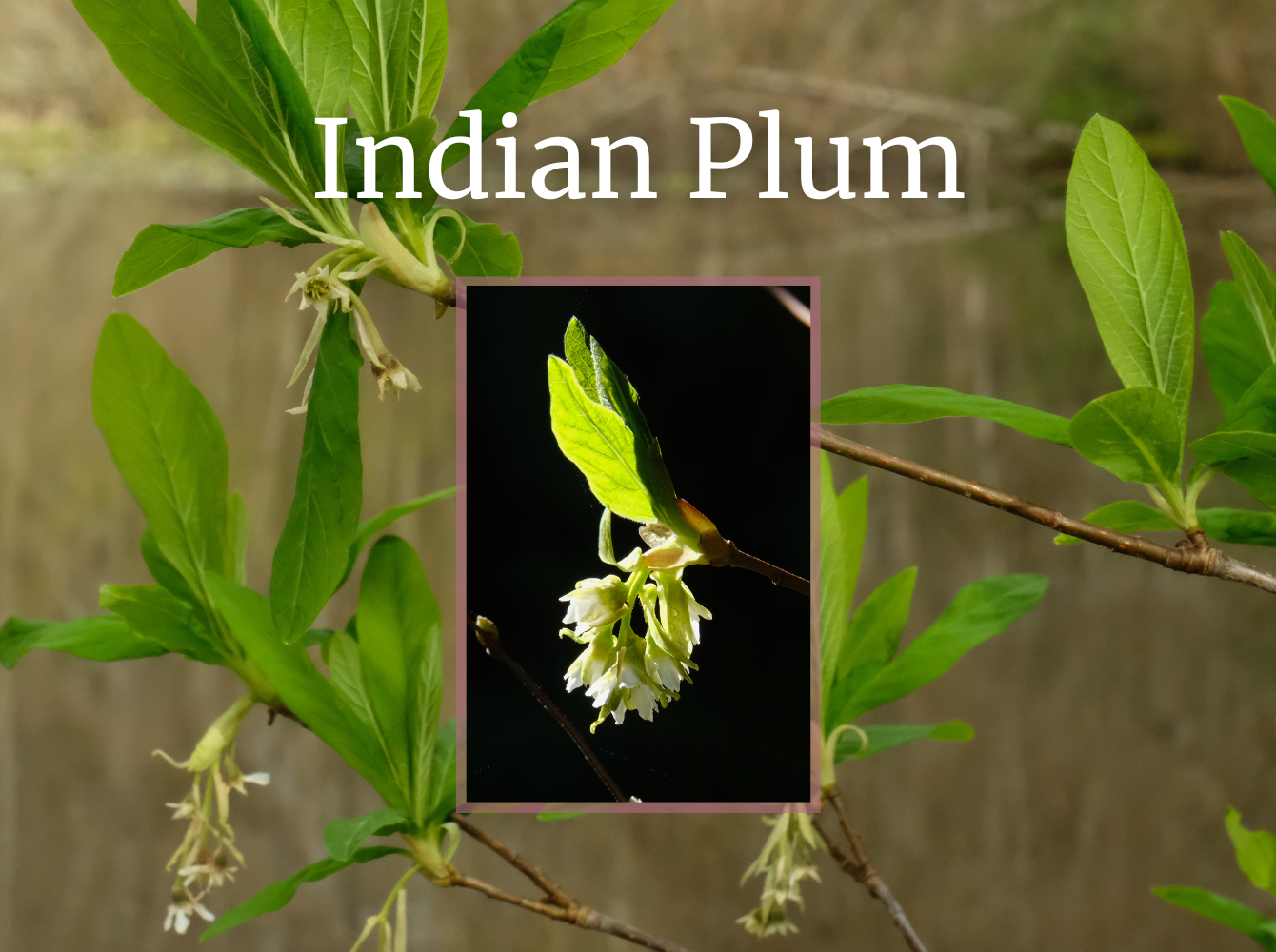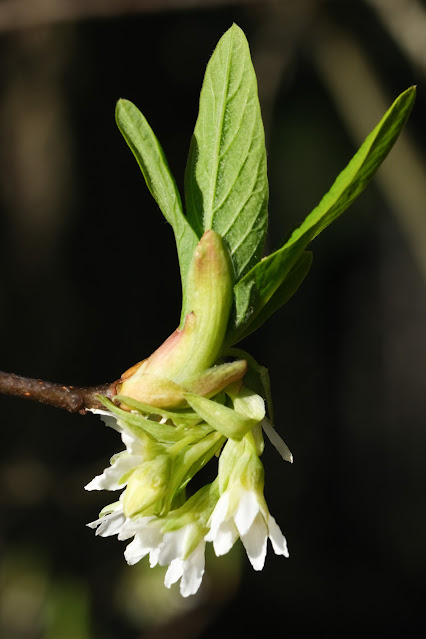Indian Plum is the first herald of spring here in the Pacific Northwest, and it begins to bud in late February when the rest of the trees still have the bare twigs of winter. This small shrub takes advantage of the sunlight before over-story trees produce leaves that will shade the plant as the summer progresses.
The drooping clusters of small, white, 5-petaled flowers appear before the leaves and provide an important source of nectar for hummingbirds, native bees, and other pollinators. These flowers hang like bells from the leaf axils, and there are male and female flowers on different plants (though they look similar).
The fresh new leaves stand vertically to catch the low late-winter sunlight, glowing like green stained glass, and as the season progresses they begin to droop down. The green leaves are oblong with a smooth edge, and when crushed they smell like cucumber.
Clusters of small plum-like fruit begin as a peach color and ripen to bluish-black. Small mammals, foxes, coyotes, deer, and bear consume the plums and disperse the seeds in their scat. The fruits are edible but bitter with large pits, and Native Peoples would eat them in small quantities, perhaps casually picking a handful while walking through the woods. The fruit was eaten fresh or dried, but was treated more as a starvation food than as a staple. An exception to this is the Kwakiutl, who would eat them fresh with oil at feasts. Coating food in oil is a pretty reliable way to make just about anything taste delicious.








